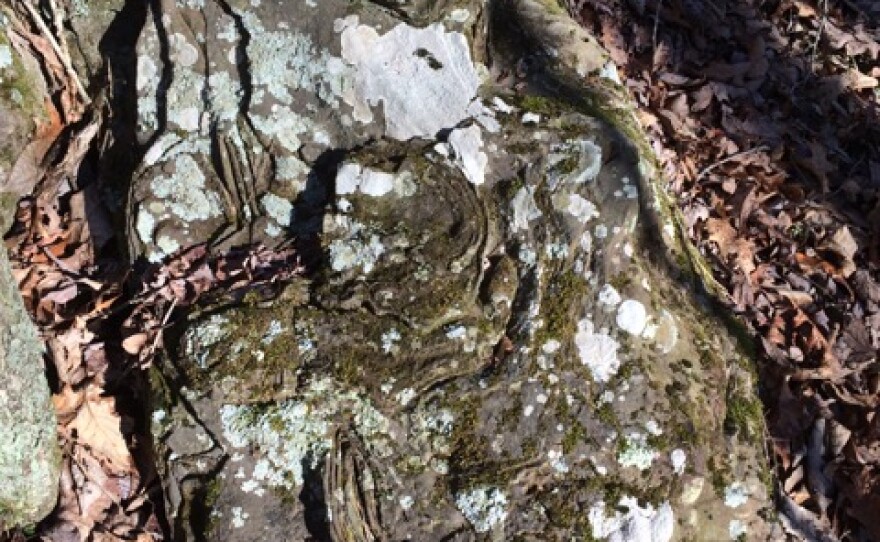A pair of Arkansas geological survey scientists spend eight months a year hiking and documenting geological formations for Arkansas STATEMAP, a federal cooperative geologic mapping program. We follow them into the wilds of Madison County to observe them at work.
Clarification: This report refers to Arkansas's various Ecoregions. According to Richard Hutto: "Ecoregions are areas where the type, quality, and quantity of environmental resources are generally similar (soil, water, sunlight). Physiographic Provinces are areas of similar topography derived from its particular geologic history (plateaus, mountains, coastal plains). The team were mapping the Ozark Plateaus Physiographic Province, and particularly on the Boston Mountains Plateau."
Also regarding the geologic origins of the Ozarks Plateau Hutto says: "Pangaea, which is actually the most recent supercontinent (not the first megacontinent) was still forming when the rocks we saw in the “unnamed creek” were being deposited. Most of the rocks that make up the Ozark Plateaus (the Salem and Springfield Plateaus) were already deposited long before Pangaea even started to assemble. The rocks of the Boston Mountains Plateau where we’re currently mapping (Bloyd and Atoka Formations) were deposited in river deltas on the continental shelf of Laurasia at the beginning of the Pennsylvanian Period, and Llanoria was the continent to the south of Laurasia that began to collide with it during the Mississippian and into the Pennsylvanian. This collision pushed up the Ouachita Mountains (not the Ozark Plateaus) and created a deep basin in the area of the Arkansas River Valley (the Arkoma Basin). Over time, that basin became filled with sediment from the newly formed Ouachitas and from the Appalachians to the northeast, eventually bringing the area above sea level. By the end of the Pennsylvanian, the new supercontinent of Pangaea was fully completed."












